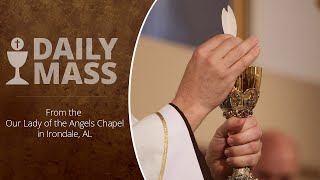
Bach: Dona nobis pacem from the Mass in B minor | Herbert Blomstedt & Gewandhausorchester Leipzig

Dona nobis pacem (Give us Peace) is the solemn final chorale in Bach's Mass in B minor, BWV 232. Here it is sung by the St. Thomas Boys Choir and the Gewandhaus Choir, accompanied by the Gewandhaus Orchestra Leipzig conducted by Herbert Blomstedt. The piece featured as the finale of a concert on October 9, 1999, at St. Nicholas Church in Leipzig.
Johann Sebastian Bach (1685 - 1750) did not originally intend the posthumously named Great Catholic Mass (also: Mass in B minor or High Mass in B minor) as a complete mass. The Latin Mass was the epitome of the Catholic liturgy at the time, but Bach was in the Protestant tradition. The Lutheran liturgy had a shortened mass, called the Missa, which consisted only of Kyrie and Gloria. Bach composed a Missa in 1733. This became the basis of the Mass in B minor, for which Bach had probably reworked various previously composed pieces and combined them into an extensive mass as late as 1749. The pragmatic multiple use of one's own compositions is called the "parody process" and was common in Bach's time – in those days church music was simply music for everyday use. In any case, the Mass in B minor gained appreciation soon after Bach's death, and in the 19th century it was even considered the greatest musical work of art of all time. It still has a fixed place in concert programs today.
Dona nobis pacem (No. 27) is a fugue in form and in purely musical terms it emerges as a repetition within the B minor Mass: It repeats the Gratias agimus tibi from the loria section of the Missa (No. 7). Through this repetition, Dona nobis pacem seems like a reprise in which the previous song of thanksgiving has become a prayer for peace. The peace that is prayed for is additionally emphasized by changing the text in the second fugue theme. It is no longer "dona nobis pacem" but rather "pacem dona nobis".
The combination of thanksgiving and peace in Bach's Dona nobis pacem may have been the reason this choral piece was chosen as the finale of the concert celebrating the 10th anniversary of German reunification in Leipzig in 1999.
Interesting fact: Dona nobis pacem from Bach's Mass in B minor does not have the same melody as the world-famous canon of the same name, the composer of which is unknown.
© EuroArts Music International
Watch more concerts in your personal concert hall:
https://www.youtube.com/playlist?list=PL_SdnzPd3eBV5A14dyRWy1KSkwcG8LEey
Subscribe to DW Classical Music:
https://www.youtube.com/dwclassicalmusic
#DonaNobisPacem #JohannSebastianBach #HerbertBlomstedt







